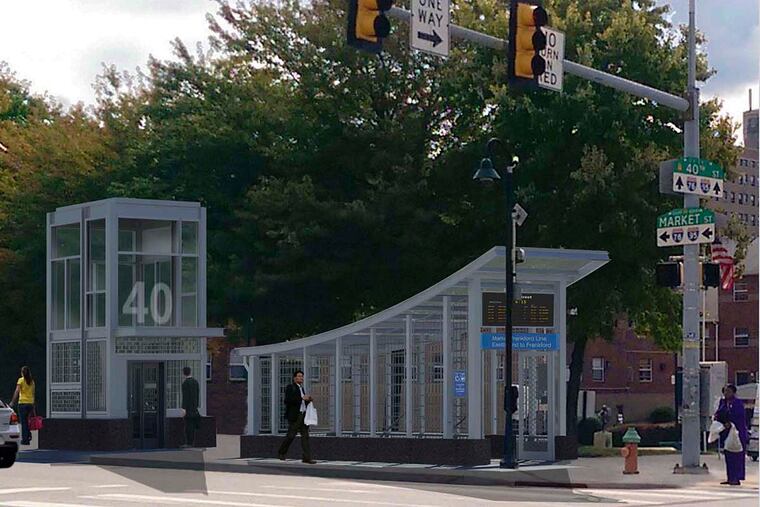SEPTA making slow progress on handicap accommodations
Wheelchair users on Philadelphia's regional public transportation network regularly face obstacles getting on and off subways and trains. Most formidable are steep stairways that, at some stops, are the only access to SEPTA's subway platforms. Out of 53 stations on the Market-Frankford and Broad Street lines, about 35 percent are not handicapped-accessible. What's needed is elevators to get people with mobility problems from street level to platforms above and below.

Wheelchair users on Philadelphia's regional public transportation network regularly face obstacles getting on and off subways and trains.
Most formidable are steep stairways that, at some stops, are the only access to SEPTA's subway platforms. Out of 53 stations on the Market-Frankford and Broad Street lines, about 35 percent are not handicapped-accessible. What's needed is elevators to get people with mobility problems from street level to platforms above and below.
"Twenty-five years after ADA [the Americans With Disabilities Act], it'd be nice to be further along than we are," said Matthew Clark, 33, of South Philadelphia, who gets around by wheelchair and is a city activist for disability access to transportation.
SEPTA took another step in that direction Monday with the announcement that two elevators will be installed at the 40th and Market Streets station on the Market-Frankford El. The $7.4 million project will begin in 2016 and should be finished the same year, SEPTA officials said. It will include elevators at the northwest and southeast corners of the intersection, as well as new entrances at all four stairways for the station. An additional $915,000 will be spent on infrastructure improvements at the station.
The 40th Street station, which SEPTA said serves 6,000 riders each weekday, also provides access to bus routes.
The 2008 recession led to an influx of stimulus money that paid for handicapped-accessibility adaptations at some SEPTA stations, but the upgrades stalled when the stimulus cash dried up. State funding approved two years ago has allowed a renewed effort to adapt stations, said Jeff Knueppel, SEPTA's general manager.
"Now what you're seeing is, we've picked up steam all over again," he said.
SEPTA recently added elevators to the Broad Street subway station at Race and Vine Streets and is looking at putting elevators at the Susquehanna-Dauphin station and a second elevator at the AT&T station near the sports complex, Knueppel said.
SEPTA buses are all handicapped-accessible. On the Regional Rail network, which extends into Delaware and New Jersey, only 66 of the 153 stations are accessible. Most of the Norristown High Speed Line is not, and among the trolleys only Route 15 is handicapped-accessible.
Still, Philadelphia's subway lines have a greater percentage of handicapped-accessible stations than the subway system in New York, where 20 percent of stations are accessible, said Robert Schoenfeld, an activist in New York for disability rights. But SEPTA lags well behind Washington's Metro system, which is nearly 100 percent handicapped-accessible. The geographic difference, Schoenfeld said, is because newer systems were built with handicapped access in mind.
Challenges on older transit networks include finding sidewalk space for elevators and avoiding utilities under streets, Knueppel said.
Clark works as a production assistant and researcher for a documentary being shot in Brooklyn, so he takes regular trips on public transportation.
Philadelphia has become increasingly aware of the accommodations needed by people with disabilities, Clark said. He recalls people giving him dirty looks if lowering a bus ramp for him caused a longer-than-usual stop.
"Now if the driver has trouble with the lift," he said, "people look at him."
215-854-4587 @jasmlaughlin